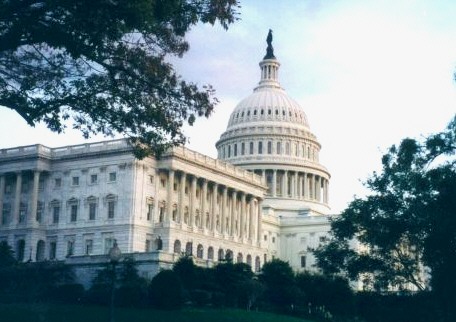The first plastic was created in 1855 by British metallurgist Alexander Parkes. As nobody knew quite what to do with it, plastic remained obscure until the 1890’s when another Brit developed polymers called “silicones.”
By 1910, plastic was a fully synthetic compound revolutionizing industry, consumer products and military supply. It is still the world’s most utilized material.
When plastic became readily available in 1910, life expectancy in the U.S. was 50. Today it is nearly 79 and there are about 80,000 American over 100 years old. Clearly, plastic is not a serious health concern.
Nevertheless, the Obama Administration has just unleashed yet another attack on plastics, using an end-run by bureaucratic fiat, hoping we won’t notice.
The Toxic Substances Control Act (TSCA) is a Carter-era law governing the Environmental Protection Agency’s management of chemicals through collecting data and designing regulatory protections. Although its original intent was to address toxic PCBs, bureaucrats found other chemicals needing management once that crisis passed.
Some of the agency’s regulations have been good, such as rulemaking on lead paint and asbestos abatement. But now EPA is abrogating the process by focusing on silicone.
Silicone polymers are so widely used that we can’t go through a waking hour without touching them. They are chemically inert, and not even environmentalists claim they are harmful.
Fire-resistant silicones are used in electrical insulation to decrease hazard, and its anti-microbial properties make it ideal for medical devices and supplies. We cook in it, we cook on it, and we rub it on our faces at the beach. Bandages, airbags and cell phones.
It is used as caulk to prevent fish from falling out of aquariums and is so safe that one type is marketed by GreenEarth Cleaning as an environmentally-friendly alternative to other dry cleaning solvents. On 9/11, silicone-treated windows in renovated areas of the Pentagon helped save lives.
To thank silicone for a century of faithful service, Obama’s EPA is using a program of its own creation and dubious legitimacy to restrict silicone’s manufacture and use.
The EPA plans to use a CAP (Chemical Action Plan) to attack a silicone called siloxane. Under the CAP, EPA can restrict, label or ban a chemical it considers a danger to mankind – which siloxane isn’t.
CAP was started in September 2009 to “enhance the Agency’s current chemicals management program,” bureaucratic code for “we just gave ourselves authority we never had before.” EPA admits overreaching the TSCA, noting “regulations allow EPA to deal with complex issues in greater detail than is possible in a statute.” Statute; smatute – why bother with the law?
Any rulemaking going through an agency must have a statutory Public Comment Period. Naturally, it should come before the new regulation is passed. But in the case of silicone, the EPA will accept public comment only after the CAP is issued. Horse, barn door; that sort of thing.
By adding CAP, the EPA can place a dark cloud over a chemical’s head without an investigative finding prior to legitimate study and rulemaking covered by the TSCA — causing considerable economic danger to industries and employees associated with CAP’d products.
This might seem random or out of context until reviewing EPA’s last two attacks on the plastics and their impact on one of Democrats’ closets allies – the trial bar.
The Obama EPA has already placed a CAP on plastic compounds containing phthalates and bisphenol-A (BPA). Environmentalists have been complaining about them for years, but there is no study finding they harm humans.
Using only CAP and not legitimate statute (and no legitimate complaint), EPA has not acted any further on CAPs, deliberately leaving manufacturers in economically destructive limbo.
Trial lawyers have already initiated class action lawsuits against plastics manufacturers and retailers. In part, they base their claims on “government findings,” i.e., CAP. Finding no victim who has sustained harm, they are suing based on “false” marketing: companies should have used warning labels on products to advise consumers of dangers that don’t exist.
Silicone nonsense isn’t even limited to the U.S.
Approaching economic collapse, the European Union created a costly new bureaucracy, the Registration, Evaluation and Authorisation of Chemicals (ironically, REACH) to investigate silicones – and regulate them not because they currently present risk to health or environment, but because well, maybe, someday, who knows – they might.
This would be funny, except it isn’t.
We are all paying for bureaucrat-activists and lawyers gone amok; salaries, court costs, increased consumer prices — known collectively as the Trial Lawyer Tax.
Consumers continue to grow old pleased with plastics and the benefits that come from using silicone/siloxane products. As for today’s bureaucrats and their misplaced priorities and questionable intent, let’s hope we are rid of them soon – before the cost of everything goes up and quality, safety and availability go down.


COMMENTS
Please let us know if you're having issues with commenting.